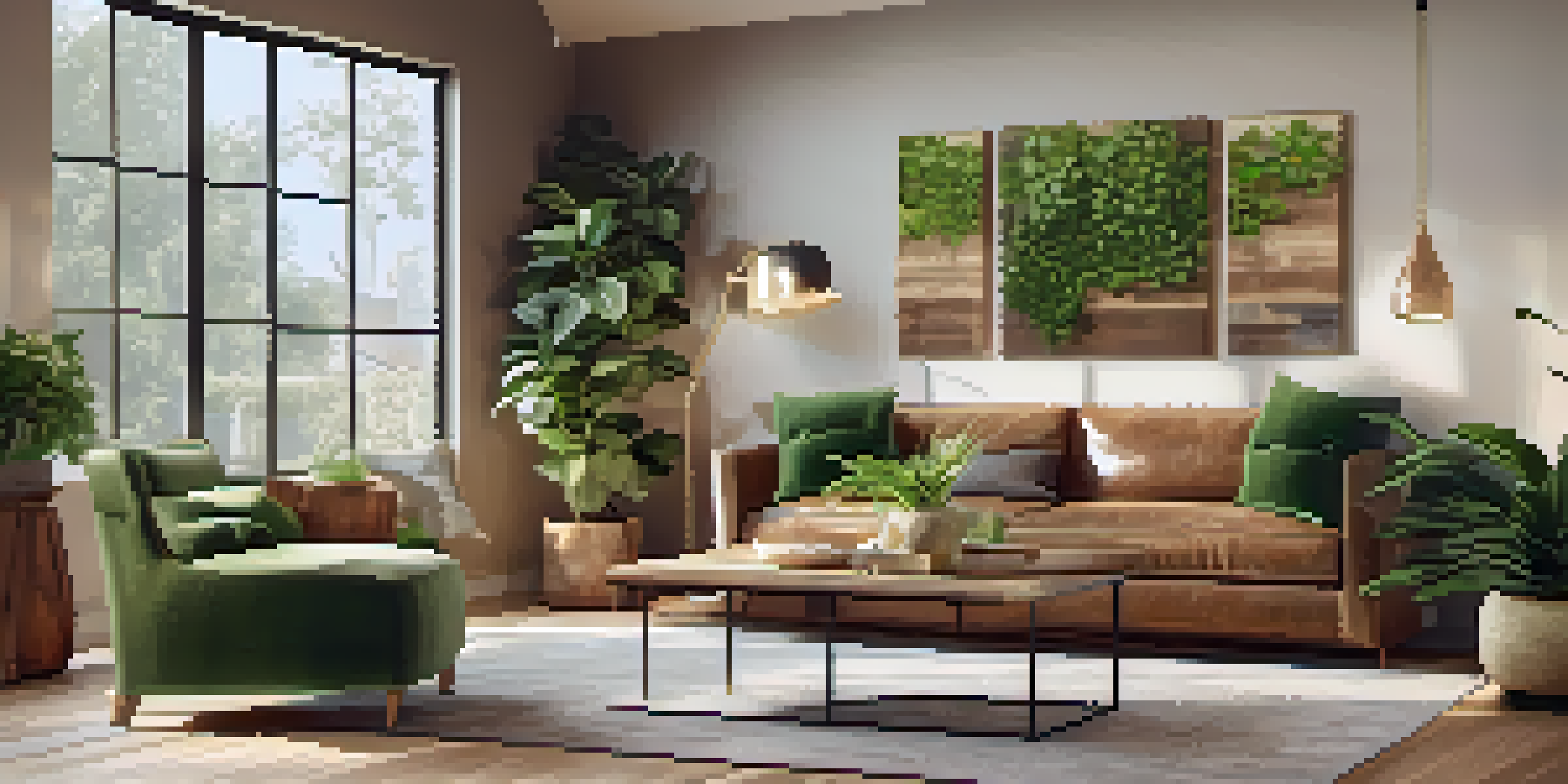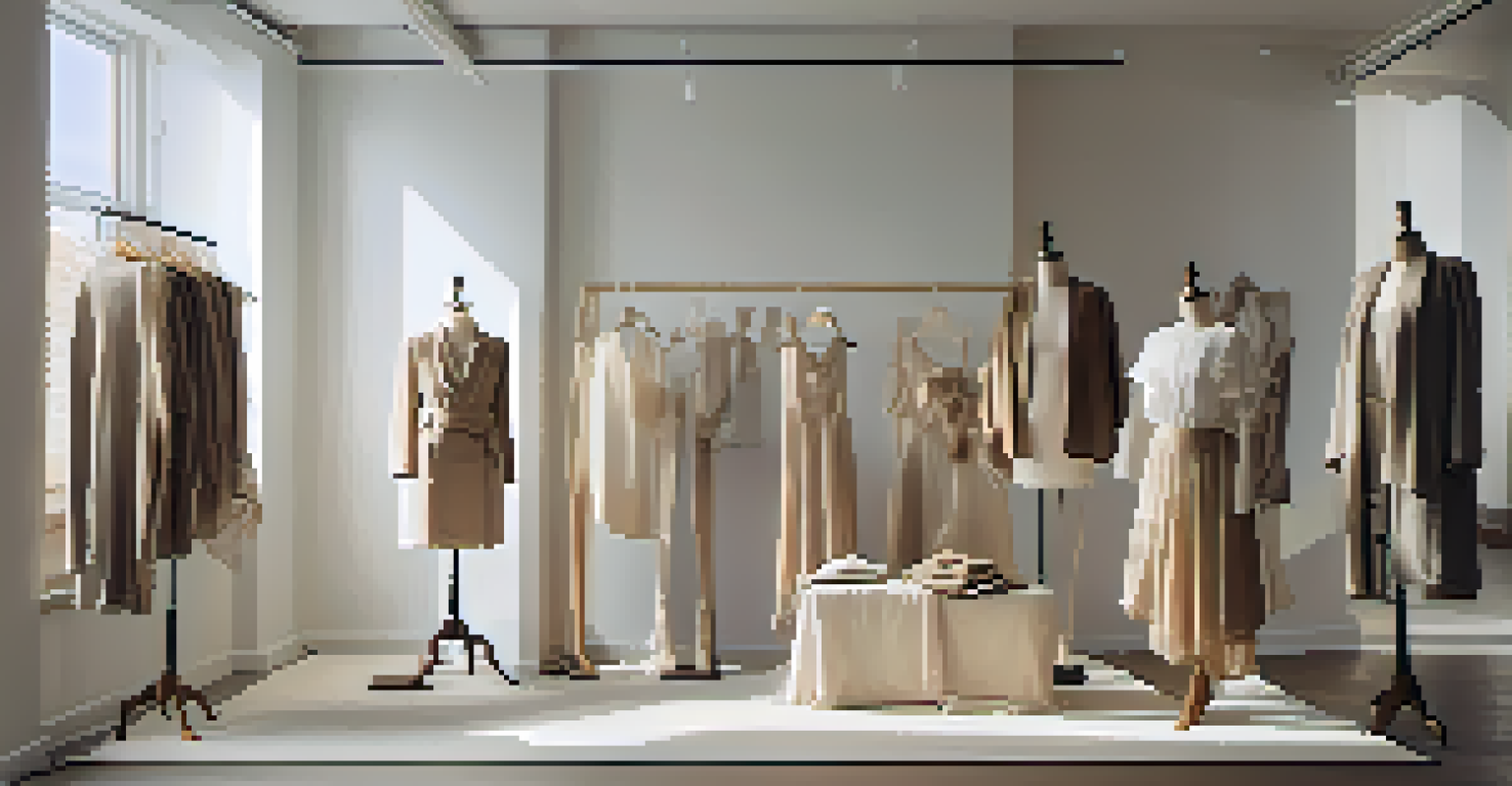Exploring Sustainable Luxury: A Guide to Eco-Conscious Living

Understanding Sustainable Luxury: What It Really Means
Sustainable luxury merges high-end living with eco-friendly practices. It's about choosing quality over quantity, selecting products that are made responsibly and ethically. Think of it as enjoying the finer things in life while also being a responsible steward of the planet.
Sustainability is no longer about doing less harm. It's about doing more good.
This concept challenges the traditional view of luxury, which often prioritizes excess. Instead, it encourages us to appreciate craftsmanship, sustainable materials, and the story behind each item. By investing in sustainable luxury, you’re not just buying a product; you’re supporting a movement.
Ultimately, sustainable luxury is about making informed choices that reflect your values. It’s a lifestyle that honors both beauty and the planet, allowing you to indulge without guilt.
The Rise of Eco-Conscious Brands in Luxury Markets
More and more luxury brands are embracing sustainability, responding to a growing consumer demand for eco-conscious products. These brands are not just adding green labels; they are rethinking their entire supply chains to minimize environmental impact. For example, some are using recycled materials or adopting fair trade practices.

This shift reflects a broader cultural change where consumers are becoming more aware of their purchasing power. By supporting brands that prioritize sustainability, we send a message that eco-friendly practices are desirable and necessary in the luxury sector. Think of it as a vote for the kind of future you want to see.
Sustainable Luxury Redefines Elegance
Sustainable luxury combines high-quality products with eco-friendly practices, allowing consumers to indulge responsibly.
In this landscape, luxury no longer means wastefulness. It signifies a commitment to quality and sustainability, proving that you can enjoy elegance while being eco-conscious.
How to Identify Truly Sustainable Luxury Products
Identifying truly sustainable luxury products can be tricky, but it starts with research. Look for certifications like Fair Trade, Global Organic Textile Standard (GOTS), or B Corporation, which indicate a brand's commitment to ethical practices. These labels provide reassurance that what you’re buying aligns with your values.
The greatest threat to our planet is the belief that someone else will save it.
Additionally, consider the materials used. Sustainable luxury often involves organic, recycled, or upcycled materials that reduce waste. For instance, a handbag made from recycled ocean plastics not only looks chic but also contributes to cleaner oceans.
Lastly, pay attention to the brand’s transparency. Brands that openly share their sourcing and manufacturing processes are often more trustworthy. This transparency allows you to feel confident in your purchasing decisions, knowing that you're supporting a brand that genuinely cares.
Incorporating Sustainable Luxury into Your Wardrobe
Building a sustainable luxury wardrobe begins with a few key pieces that are timeless and versatile. Invest in high-quality staples like a well-tailored coat or a classic handbag that can withstand trends and last for years. This not only reduces waste but also means you’ll always have something stylish to wear.
Consider second-hand luxury items, too. Thrift shops and online resale platforms can be gold mines for finding unique, high-end pieces at a fraction of the original cost. This practice not only saves money but also extends the lifecycle of beautiful items that deserve a second chance.
Eco-Conscious Brands Are Thriving
Luxury brands are increasingly adopting sustainability in their supply chains, responding to consumer demand for eco-friendly options.
Lastly, embrace the idea of a capsule wardrobe, which focuses on a limited number of high-quality pieces that you love. By curating your wardrobe thoughtfully, you’ll find that you can create countless outfits without the need for constant shopping.
Sustainable Luxury in Home Décor: Creating Eco-Friendly Spaces
Transforming your home into a sustainable luxury space involves choosing high-quality, eco-friendly materials that reflect your style. Opt for furniture made from reclaimed wood or ethically sourced materials, which not only look stunning but also tell a story. Each piece can be a conversation starter about sustainability.
Incorporating plants into your décor is another way to enhance both aesthetics and air quality. Plants not only beautify your space but also create a healthier environment by improving air circulation. Consider stylish planters made from sustainable materials to elevate the look.
Finally, lighting plays a crucial role in setting the mood of your home. Invest in energy-efficient LED bulbs and fixtures crafted from sustainable resources. This not only reduces your carbon footprint but also creates a warm, inviting atmosphere in your living spaces.
Traveling Sustainably: Luxury on the Go
Traveling sustainably is all about making mindful choices while exploring the world. Opt for eco-friendly hotels that prioritize sustainability through green practices like solar energy and waste reduction. These accommodations often provide luxurious amenities while maintaining a commitment to the environment.
When it comes to dining, seek out restaurants that use locally sourced ingredients and support sustainable farming practices. Not only will you enjoy fresh, delicious meals, but you’ll also contribute to local economies and reduce your carbon footprint.
Mindful Choices Enhance Your Wardrobe
Building a sustainable luxury wardrobe focuses on timeless, high-quality pieces and the benefits of second-hand shopping.
Lastly, consider activities that celebrate nature and culture without harming them. Choose guided tours that respect local ecosystems or participate in community-led initiatives that promote conservation. This way, you can indulge in the luxury of travel while being a responsible visitor.
The Future of Sustainable Luxury: Trends to Watch
The future of sustainable luxury is bright, with exciting trends emerging that prioritize both elegance and eco-friendliness. One trend to watch is the rise of circular fashion, where brands create products designed to be reused or recycled. This approach not only minimizes waste but also promotes a more sustainable consumption model.
Technology is also playing a significant role, with innovations in sustainable materials and production processes. For example, advancements in biodegradable fabrics and 3D printing can lead to reduced waste and a smaller environmental footprint. The luxury sector is beginning to embrace these technologies, offering consumers stylish options that are also kind to the planet.

As awareness continues to grow, consumers will likely demand more transparency and accountability from brands. This push will encourage luxury companies to adopt more sustainable practices, making eco-conscious living not just a trend but a standard in the industry.